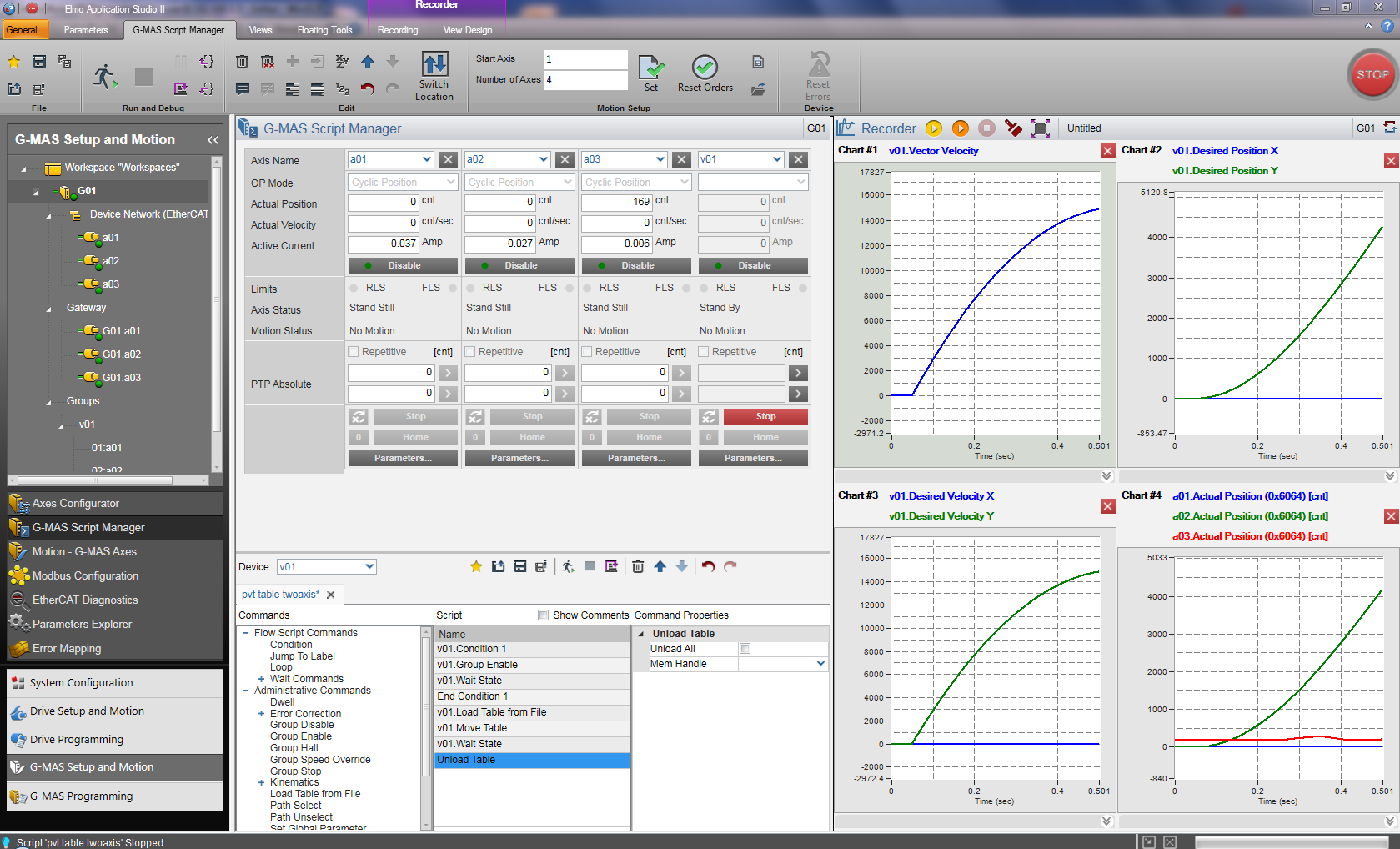Full control over Group position, velocity and time parameters
Used In:
- Any application where full control is required over motion trajectory PVT
- Applications requiring on-the-fly PVT properties
Used In:
Position, velocity and time (PVT) motion is a table-based motion, requiring that each axis in a Group adhere to a list of Positions specified in the table at defined Times. The same table also specifies the Velocity at which each axis should be running for each Position point.
Since this motion defines Position points for several axes, it is by nature a synchronized motion. The G-MAS can run a Group PVT trajectory from a file, or use a dynamic PVT table, were the user can add PVT properties during motion execution (‘on-the-fly’).
PVT motion is a convenient method for running several axes in a synchronized manner, where all axes in a Group get target Positions (and target Velocities) with the same Time frames.
The PVT motion is restricted to “Interpolated Position” (CANopen networks), or “Cyclic Position” (EtherCAT networks) motion modes, where the G-MAS calculates and performs the trajectory.

At the end of a specified FB, using the administrative FB mechanism, a user can precisely change motion parameters (including parameters that are mapped to a communication), IOs and maximum torque.
The axis status and the FB queue status can be queried. This status represents the PLCopen status for the axis.